Fiverr was founded in 2010 by Micha Kaufman and Shai Wininger. Two serial entrepreneurs with some previous internet business experience.
By that time, freelancing was already well established as Elance was founded in 1999 and oDesk came to be in 2003. By 2006 oDesk even had freelancers in more than 50 countries and attracted funding from deep pocketed VCs. Elance and oDesk later merged into Upwork.
So why did Micha and Shai started Fiverr? Well, there were 2 things that lacked in the world of freelancing:
- Simplicity
- Standardisation
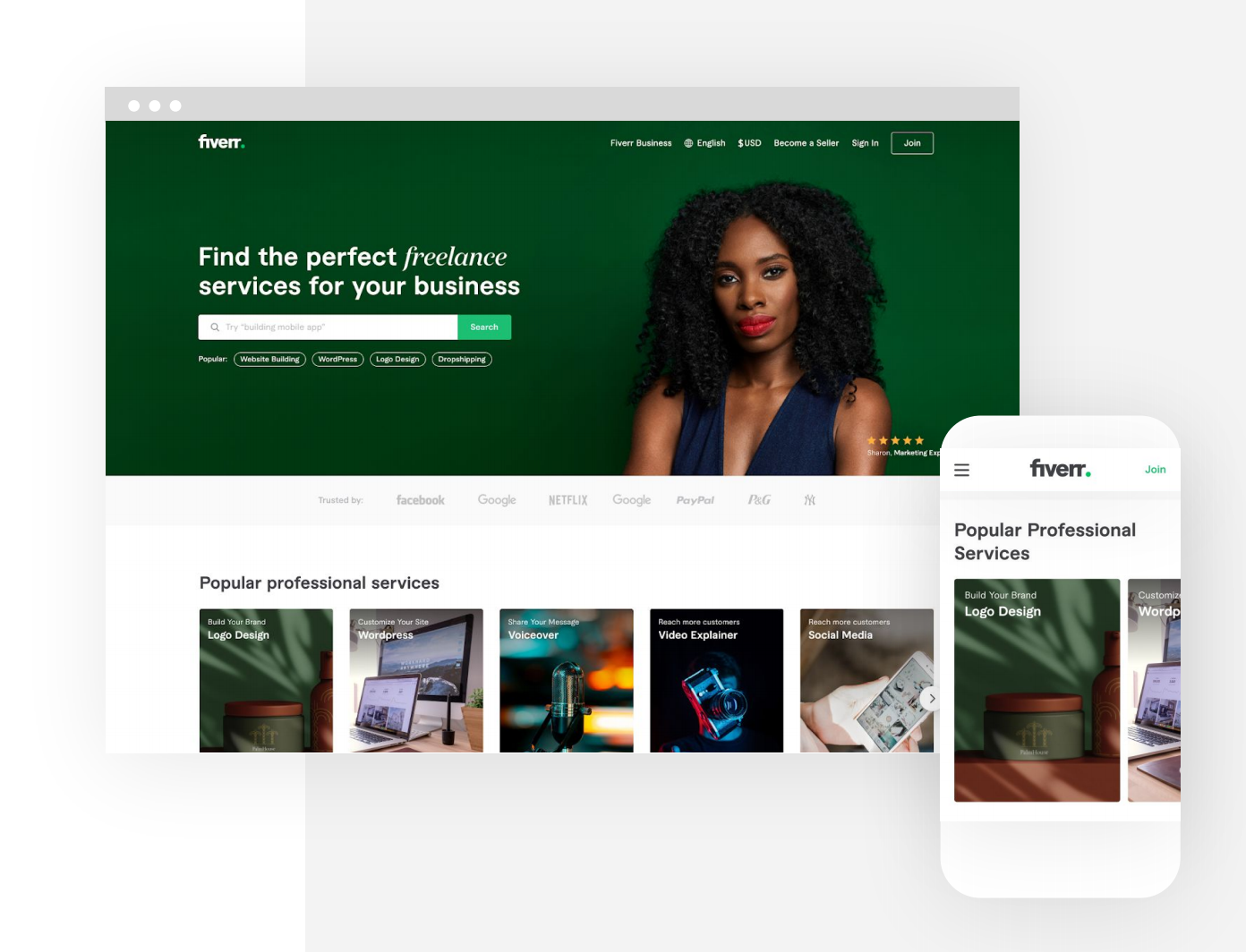
Freelancing without Fiverr
The conventional freelancing website works this way:
- Buyers draw a job offer with all details (mockups, budget, time, specifications…)
- Buyers post the job they need to be done
- Multiple freelancers apply and sell their services to the prospective buyers
- Using ratings and comments from previous jobs, the buyers filter through the freelancers
- After an interview, the buyers selects a freelancer
It’s not hard to see, this process is the same as recruiting an employee for your company.
Is this the process you want to go through when you need someone to edit a picture for your social media account? Is this what you want to go through when you look for someone to manage your Shopify account?
You can see it, this process is cumbersome, lengthy and not standardised as:
- Freelancers may apply for jobs they may not be optimally fit for
- Buyers have to filter though multiple job offers that do not come in the same format
- Freelancers have to spend considerable time reading and reviewing job postings they could be a fit for
- Each buyers posts its job in a different format, complicating the job of freelancers
In the end, this process creates a lot of uncertainty and frictions for both the buyers and freelancers.
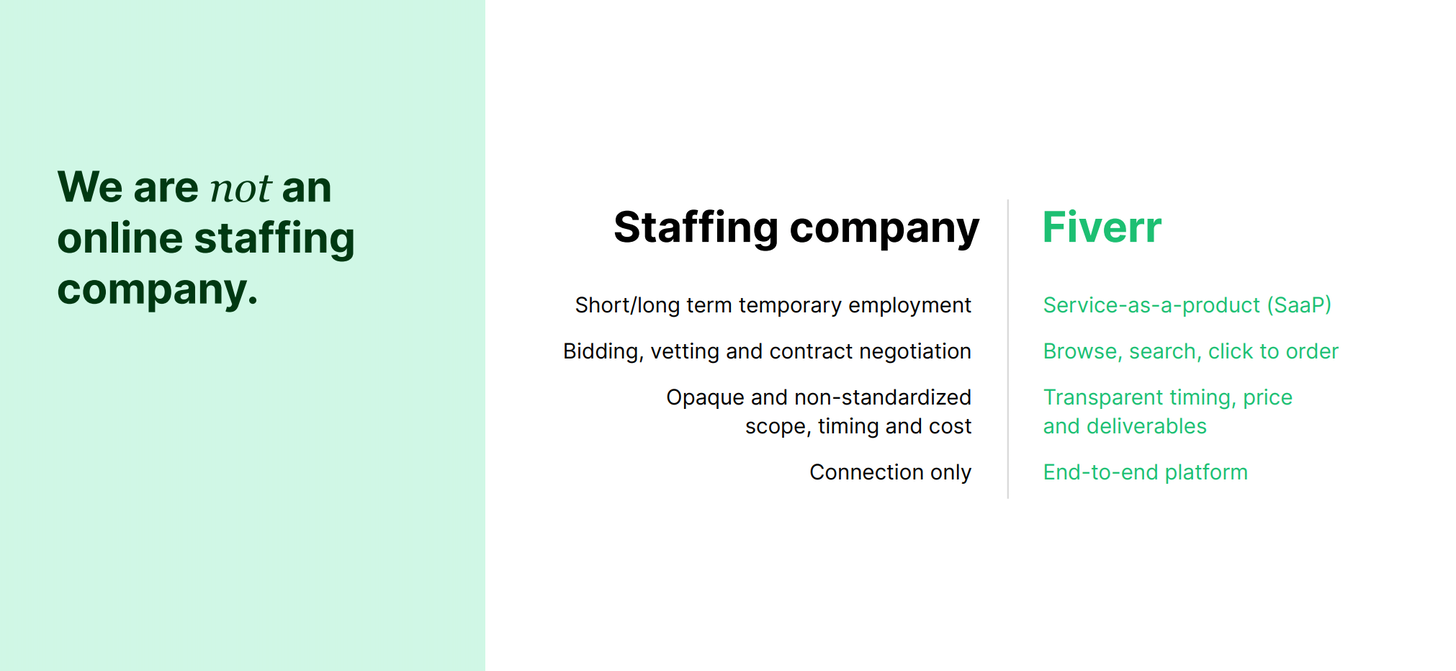
Here Comes Fiverr
This is exactly what Micha and Shai wanted to change when building Fiverr.
“We started with the simple idea that people should be able to buy and sell digital services in the same fashion as physical goods on an e-commerce platform.On that basis, we set out to design a digital marketplace that is built with a comprehensive SKU-like services catalog and an efficient search, find and order process that mirrors a typical e-commerce transaction.” - Fiverr S-1 Filling
Instead of copy and pasting the existing human resources recruiting process, they took inspiration from e-commerce.
What they got is a standardised and easy to use e-commerce platform for buying and selling freelancing “gigs”. Nice! But how did they do that concretely?
Fiverr started with a very simple message: “Buy and sell $5 jobs”. It instantly became the $5 micro-services platform:
- Freelancer would simply list their services for $ 5 and buyers could instantly add a service to their cart
- Removed the need for job proposals, freelancer filtering, lengthy discussion over the scope and scale of the project
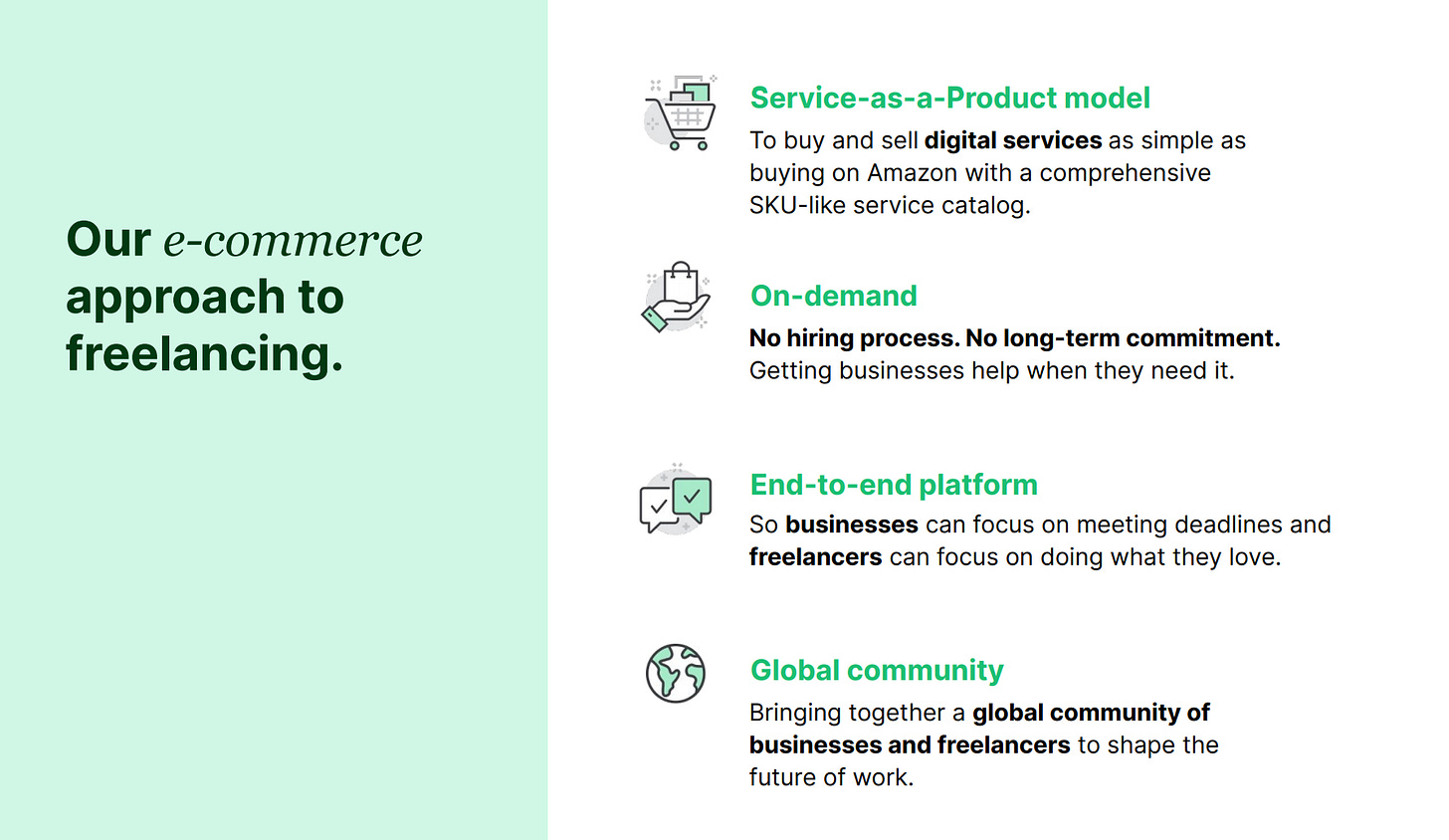
Venture Funding And Growing Above $5
This gave Fiverr some traction and lead Adam Fisher from Bessemer Venture Partners to invest in the business back in 2011. Here are some key highlights on how things unfolded:
- In December 2010, the company was generating 60.000 transactions per month and had 8 employees
- At first, each gig was priced at $5. This forced sellers to differentiate themselves based on creativity and quality while making pricing extremely easy and transparent
- This fixed and simple price tag made sure that customers were coming back as it was a “no-brainer” to buy small gigs over and over
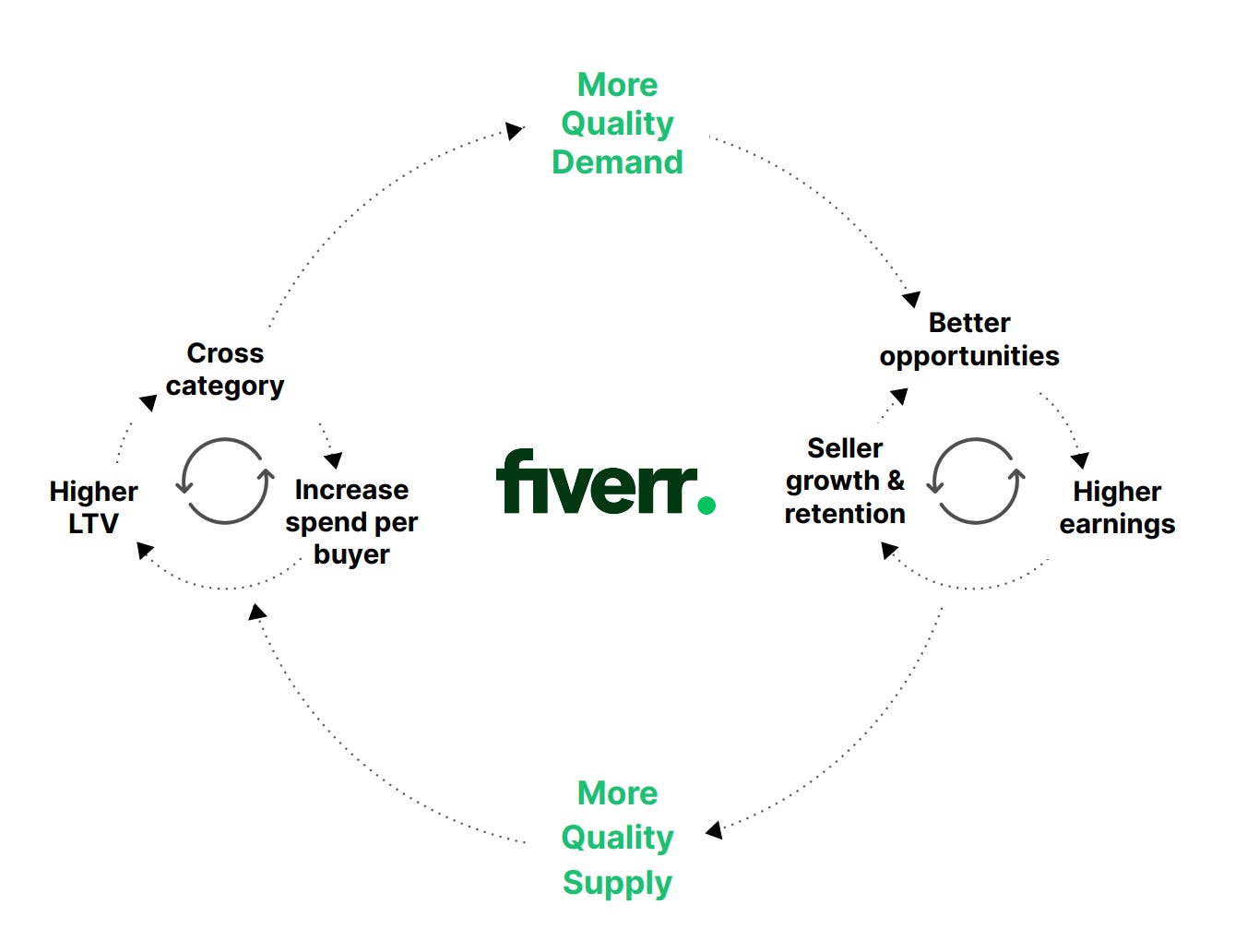
- The $5 price limit was removed early on in 2011 but the spirit of simple and transparent pricing stayed
- In 2018, Fiverr reach 5 million buyers and already proposed over 200 categories
For the ones interested, here is the full Bessemer Venture Partners memo.
A Solid Business…
That’s all good! But how does Fiverr makes money? Taking commissions on small-value gigs can’t be that profitable right? Here is the deal:
- Sellers get 80% of the total order value while Fiverr takes a 20% commission on the selling price
- Buyers pay $2 in service fees for orders under $40 and 5% of order value above that
How does that translate into sales? Well, things are going well for Fiverr! Certainly when we know that pre-Q3 earnings, Fiverr raised its Q3 guidance from 72% growth to 76%. It ended up with 88% YoY growth.

Growth is provided by the combination of higher customer spending and higher number of customers. Spend per buyer increased to $195 from $163 a year ago all the while the number of active buyers grew to 3.1 million from 2.3 million a year earlier.
Gross margins are stable at around 83% while operating expenses as percentage of sales are down to 85% from 111% a year earlier.
The company is sitting on $311m in current assets, up from $290m in the previous quarter and has $126m in current liabilities (versus $117m in the previous quarter).
…In A Growing Market
Fiverr’s story looks compelling on paper. Their product has found a market and they manage to increase revenues while keeping operating expenses in check and preserving their gross margins.
There are 2 questions we are left pondering with. First, is the total market for freelancing services growing? Second, are customers preferring Fiverr over alternatives such as Upwork?
1. Is the total market for freelancing services growing?
The pandemic only accelerated a change that was well under way: Flexible working.
In the U.S. freelance work contributed to $1.2 trillion to the economy. A increase of 22% compared to 2019.
36% of the U.S. workforce (so 59 million people) performed freelance work in the past 12 months.
50% of the Gen Z. (people aged 18 to 22) have freelanced in the past year and 36% of these started during the pandemic.
This is further supported by the fact that 92% of millennials identify flexibility as a top priority when job hunting.
That’s good! Employees are increasingly relying on freelancing as a source of income. But are corporates and businesses also making the switch?
Yes! Employers and hiring managers are looking for more flexible sources of work.
73% of hiring managers are increasing their use of independent professionals.
62% of hiring managers said they prefer to engage with independent professionals to get jobs done quickly.
2. Are customers preferring Fiverr over alternatives such as Upwork?
We just saw it, employers and employees turn to flexible sources of work. But is Fiverr the one benefitting the most from this shift?
- Fiverr.com counted 61 million visits in August 2020 versus 43 million in March 2020 - Representing a 42% increase
- Upwork.com counted 33 million visits in August 2020 versus 30 million in March 2020 - Representing a 10% increase
- Freelancer.com counted 10 million visits in August 2020 versus 11 million in March 2020 - Representing a 10% decrease
When it comes to time spent on site and page views:
- Fiverr.com average visit duration stood at 23 minutes and had 9.3 page views per visit
- Upwork.com average visit duration stood at 12 minutes and had 8.4 page views per visit
- Freelancer.com average visit duration stood at 14 minutes and had 10.5 page views per visit
Customer And Seller Satisfaction
We’ve seen it, Fiverr is a solid business. They have clearly identified the bottlenecks that prevented other freelancing platforms from breaking out. They made the experience as easy as clicking on a service, adding it to your cart and checking out.
They removed the hurdles that kept inexperienced buyers away from the platform.
Of course, a two-sided platform such as Fiverr requires a fine balancing act for the flywheel to spin. Buyers need to be find what they want and sellers need to know they can make a profit.
Fiverr has clearly identified these elements as they have a NPS of 67 for buyers and 78 for sellers. For reference, Apple and Amazon are reported to have a NPS above 60.
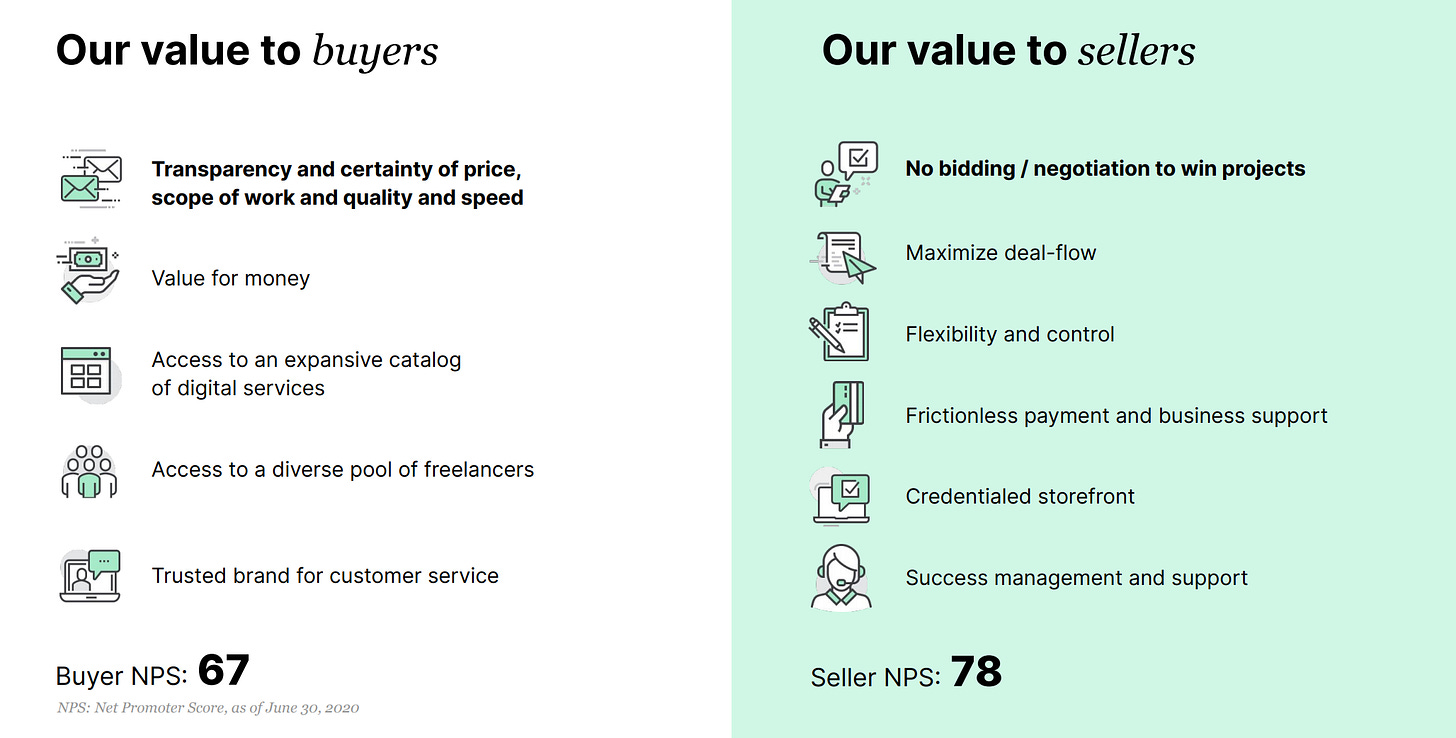
What’s Next?
Fiverr has just launched Fiverr Business. In order to ease the way corporate businesses can hire freelancers. As Micha Kaufman explained to TechCrunch:
“2020 marks the beginning of a decade where businesses will invest and learn how to truly integrate freelancers into their workflows. […] Organisations require tools to manage their team accounts, defining projects, assigning budgets, tracking progress and collaborating internally”
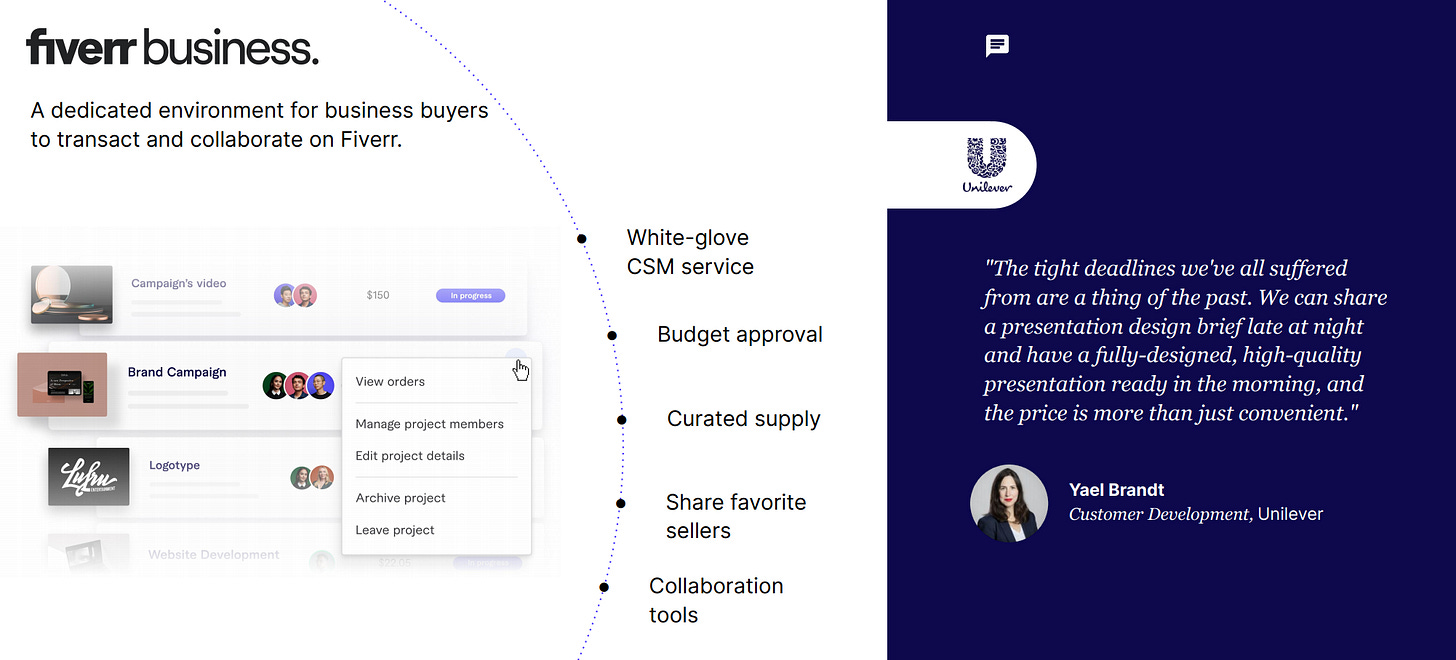
And that is just the beginning. Just think of the possibilities when you have an army of knowledgeable people on one platform. What could you do?
- Start an online learning platform where freelancers become teachers
- Enable freelancers to advertise their gigs in order to stand out
- Package services into bundles and become a subscription-based agency
- Start a software for managing one’s business
And that is exactly what Fiverr is doing.
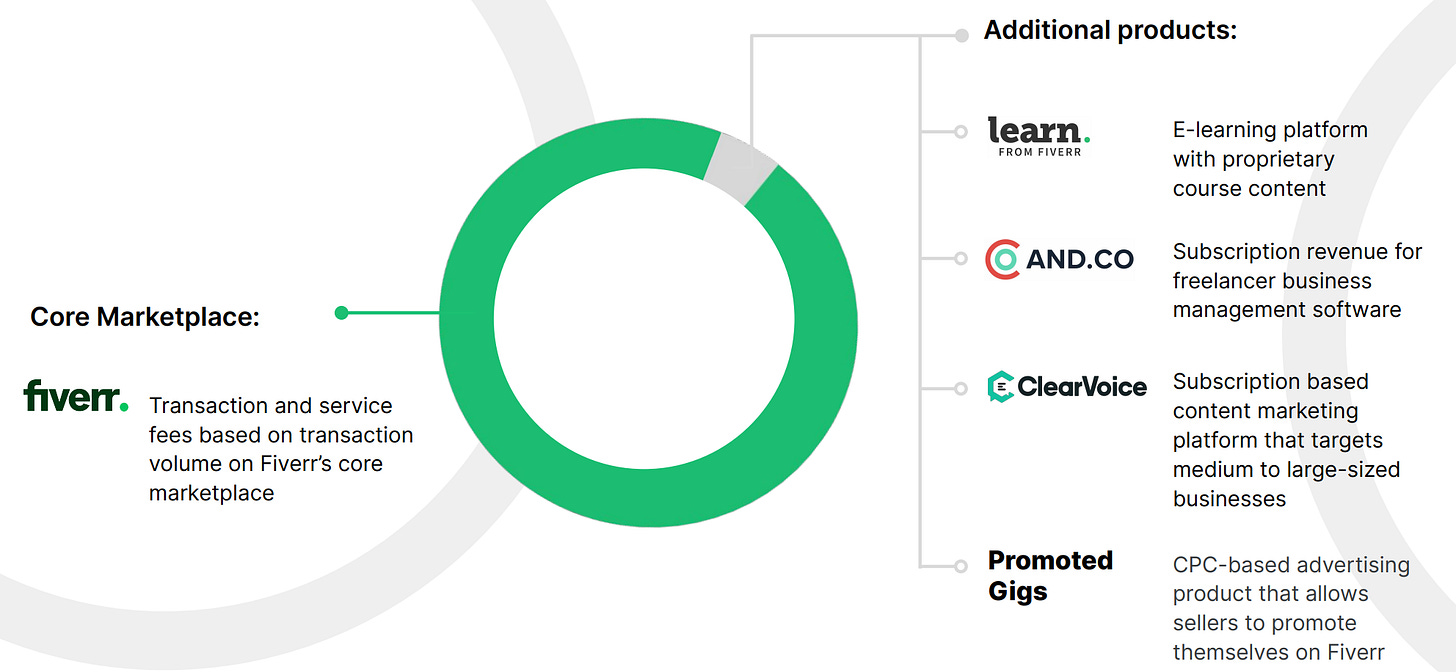
BENCHMARK'S TAKE
- The freelance market is growing fast, driven by demand for more flexible ways of working from employers and employees
- Fiverr has turned the freelance industry on its head by becoming an e-commerce platform rather than a human resources platform
- This strategy enables it to greatly simplify the jobs offering and pricing
- Big corporates, small businesses and e-commerce entrepreneurs need this form of support more than ever before as it reduces their cost and increases their operations’ efficiency
- It is expanding fast into new areas such as education tech, advertising, software
Disclaimer
Please note that this article does not constitute investment advice in any form. This article is not a research report and is not intended to serve as the basis for any investment decision. All investments involve risk and the past performance of a security or financial product does not guarantee future returns. Investors have to conduct their own research before conducting any transaction. There is always the risk of losing parts or all of your money when you invest in securities or other financial products.






